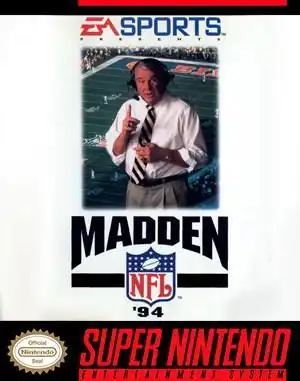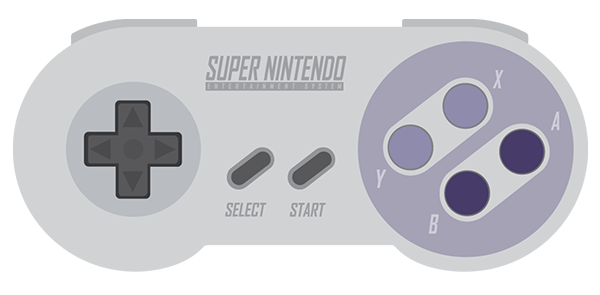Remember the first time you heard that voice? The deep, resonant boom of "EA Sports. It's In The Game." followed by that iconic animation? For many retro gamers, that moment is forever linked to firing up Madden NFL ’94. While the series had been around for a few years, the '94 installment, particularly on the Super Nintendo and Sega Genesis, felt like a significant leap forward, cementing Madden's destiny as the dominant force in virtual football.
It wasn't just a yearly roster update; Madden NFL ’94 brought polish, features, and a simulation focus that truly started to differentiate it from arcade cousins like Tecmo Bowl. Let's lace up our virtual cleats and revisit why this game holds such a special place in 16-bit history.
The SNES vs. Genesis Showdown (and Evolution)
While Madden had roots on the Genesis, the '94 version saw the SNES port catch up and, in many ways, surpass its counterpart. EA's SNES team clearly put in the work:
- Visuals & Sound: The SNES version boasted noticeably better graphics and, crucially, enhanced audio, including clearer speech samples from John Madden and the announcer. The dynamic stadium views during team selection and the dedicated animation for the coin toss added layers of presentation previously unseen.
- User Interface: Menus felt more refined and easier to navigate on the SNES.
- Performance: Early Madden games sometimes favored the Genesis's speed, but by '94, the SNES version closed the gap while offering superior visuals and sound.
This cross-platform rivalry pushed both versions to improve, ultimately benefiting players regardless of their console allegiance.
Beyond the Kickoff: Gameplay Innovations
Madden NFL ’94 wasn't just a pretty face; it packed in features that pushed the simulation envelope for the era:
- Enhanced Stats: Player comparisons were more detailed, using actual stats to influence strategy. Pause and halftime screens provided deep dives into game statistics, including advanced metrics like pass completion percentage.
- "Flip Play": A simple yet crucial addition allowing players to quickly reverse the direction of a chosen play at the line of scrimmage.
- Advanced Instant Replay: Being able to rotate the camera 360 degrees and watch plays in slow motion was revolutionary for analyzing what went right or wrong.
- Simulation Focus: Unlike arcade-style games, player ratings and realistic outcomes were paramount. While exploits existed (hello, wide-open receiver!), success relied more on understanding football concepts.
- Game Modes: Beyond exhibitions, you could play a full regular season (using a password system – remember those?), sudden death, and even historical playoff/Super Bowl matchups.
The Roster Riddle: Teams Yes, Names No
A key development in Madden NFL ’94 was EA securing the official NFL team license. This meant authentic team logos and uniforms finally graced the virtual gridiron, a huge win for immersion.
However, they didn't yet have the NFL Players Association license. The result? You had your favorite teams, but players were identified only by their jersey numbers, not their names. It seems quaint now, but back then, seeing the real logos felt like a major upgrade, even if you had to remember who #20 on the Lions was (Barry Sanders, obviously).
Still Worth a Play?
Does Madden NFL ’94 hold up today? Like many retro sports games, it has limitations compared to modern simulations. The lack of saving season stats feels archaic, and some animations or graphical inconsistencies might stand out.
However, its core gameplay remains solid and fun. It captures a specific era of football gaming – before overly complex controls or endless microtransactions. It's a straightforward, challenging, and rewarding experience that feels distinct from both the arcade games that preceded it and the simulation behemoths that followed.
If you want to experience this pivotal game, the 16-bit versions are the most iconic. The PC version also exists and can often be found on sites like Archive.org and played via DOSBox. GOG.com occasionally features older EA sports titles, so keep an eye out!
The Legacy Cemented
Madden NFL ’94 was more than just another entry; it was the game that truly established the series' direction. By significantly upgrading presentation, deepening simulation elements, and securing key licensing, it laid the foundation for Madden's annual dominance. For many, it's the game that truly made them believe: "It's In The Game."
FAQ
Q: Why didn't Madden NFL ’94 have player names? A: EA Sports had secured the NFL team license for logos and uniforms but did not yet have the NFL Players Association license, which is required to use individual player names. Players were identified by number instead.
Q: Was Madden NFL ’94 better on SNES or Genesis?
A: While the Genesis had earlier Madden versions, the Madden NFL ’94 SNES port was significantly improved, often considered superior due to better graphics, enhanced audio (including speech), and refined menus, while matching the Genesis's gameplay speed.
Q: Can I still play Madden NFL ’94 today? A: Yes! The SNES and Genesis versions are playable via emulation (like RetroArch). The PC version can often be found and played using DOSBox. Physical cartridges are also available on the secondary market.
Q: What was the significance of "It's In The Game"?
A: Madden NFL ’94 was the first game to feature the now-iconic "EA Sports. It's In The Game." audio tagline and animation upon startup, becoming a signature element of the brand for decades.


